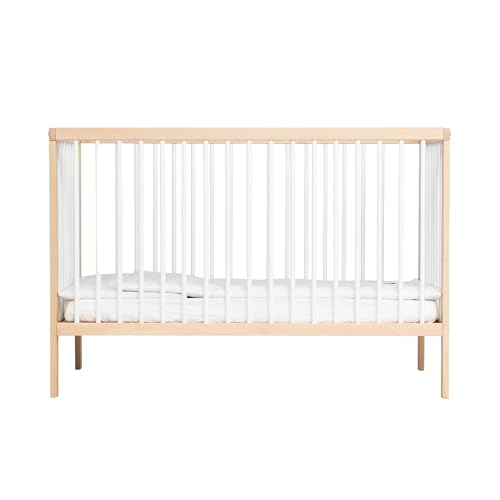
Good Cribs
Add a review FollowOverview
-
Founded Date May 18, 1928
-
Sectors Health Care
-
Posted Jobs 0
-
Viewed 7
Company Description
10 Things You Learned In Kindergarden To Help You Get Started With Baby Cots
The Essential Guide to Baby Cots in the UK
Choosing the best cot for a newborn can be a difficult task for new moms and dads. With many options available in the UK market, understanding the features, security standards, and kinds of baby cots is important. This short article intends to supply an informative introduction of the numerous baby cots readily available, their benefits, and considerations for parents in the UK.
Types of Baby Cots
There are several kinds of baby cots available in the UK, each created to satisfy different requirements and preferences. The most common types include:
-
Standard Cots: These are standard baby cots that offer a safe sleeping environment for newborns and babies. They generally feature adjustable bed mattress heights to match the baby’s development.
-
Convertible Cots: Also referred to as 3-in-1 or 4-in-1 cots, these versatile options can change from a cot to a young child bed and even into a full-size bed. They are developed for prolonged use, making them an economical choice.
-
Moses Baskets: Ideal for the early months, Moses baskets are light-weight and portable, making them simple to move around the home. They generally include a detachable cover and a soft mattress.
-
Travel Cots: These cots are foldable and compact, specifically created for parents on the go. They feature a travel bag for easy transportation and are best for pajama parties or vacation journeys.
-
Co-Sleepers: These cots are created to connect to the parent’s bed, allowing for simple access to the baby throughout the night while ensuring the youngster has their own safe sleeping space.
Table 1: Comparison of Baby Cot Types
| Type of Cot | Age Range | Mobility | Longevity | Price Range |
|---|---|---|---|---|
| Standard Cot | Birth to 2 years | Low | Moderate | ₤ 120 – ₤ 300 |
| Convertible Cot | Birth to 5+ years | Moderate | High | ₤ 150 – ₤ 500 |
| Moses Basket | Birth to 6 months | High | Low | ₤ 40 – ₤ 150 |
| Travel Cot | Birth to 3 years | Very High | Low | ₤ 50 – ₤ 200 |
| Co-Sleeper | Birth to 6 months | Moderate | Low | ₤ 100 – ₤ 300 |
Safety Standards for Baby Cots in the UK
Ensuring the safety of a baby cot is vital. In the UK, all cots should adhere to particular guidelines to guarantee they are safe for usage. The following requirements must be fulfilled:
-
British Standard BS EN 716: This basic sets requirements for the security and efficiency of kids’s cots and folding cots.
-
Material Safety: The cot must be made from non-toxic materials that are complimentary from hazardous chemicals.
-
No Sharp Edges: Ensure there are no sharp edges or protruding points that could harm the baby.
-
Steady Structure: The cot needs to have a stable base to prevent tipping, and the slats ought to be spaced properly to avoid the baby’s head from getting caught.
-
Mattress Fit: The mattress ought to fit snugly in the cot, with no spaces that might position a suffocation threat.
Features to Consider When Choosing a Baby Cot
When selecting a baby cot, parents ought to keep the following functions in mind:
-
Adjustable Mattress Heights: Cots with adjustable heights make it much easier to place and lift the baby as they grow.
-
Material Quality: Look for sustainably sourced wood or materials that are both durable and safe for infants.
-
Relieve of Assembly: Top rated Cots that are easy to put together and dismantle can conserve parents time and frustration.
-
Storage Options: Some cots include integrated storage drawers to keep baby essentials organized.
-
Design and Aesthetic: Choose a cot design that fits well with the home design while ensuring it is practical and safe.
FAQs About Baby Cots in the UK
Q1: How much should I anticipate to spend on a baby cot?
A1: Prices for baby cots in the UK can vary commonly based on type and brand, varying from ₤ 40 for a basic Moses basket to over ₤ 500 for high-end convertible cots.
Q2: When can my baby transfer to a cot from a crib?
A2: Most children transition to a cot in between 6 months and 2 years, depending upon their size and mobility. It’s crucial to monitor their developmental milestones.
Q3: Are pre-owned cots safe to use?
A3: While second-hand cots can be safe, ensure they satisfy present safety requirements and show no signs of wear, damage, or remembers. It’s recommended to avoid older designs that may not adhere to current policies.
Q4: Can I use a cot for a co-sleeping arrangement?
A4: Co-sleeper cots are developed specifically for this function, permitting you to keep your baby close while keeping a safe sleeping environment. Always abide by co-sleeping safety recommendations.
Q5: What is the best mattress type for a baby cot?

A5: A firm and flat bed mattress is suggested for infants. Prevent soft bed mattress, as they increase the danger of suffocation. Ensure it fits comfortably in the cot with no gaps.
Selecting the best baby cot is a pivotal choice for new parents in the UK. It needs careful factor to consider of security policies, kinds of cots available, and features that cater to their particular needs. By being knowledgeable, moms and dads can produce a safe and comfy sleeping environment for their babies, guaranteeing comfort during those essential early months. Ultimately, investing time in research study can result in an informed decision that stabilizes safety, convenience, and usefulness.



